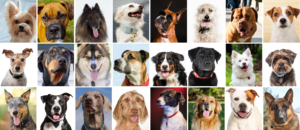McGreevy, P. D., Georgevsky, D., Carrasco, J., Valenzuela, M., Duffy, D. L., & Serpell, J. A. (2013). Dog behavior co-varies with height, bodyweight and skull shape. PLoS ONE, 8(12), e80529. doi: https://doi.org/10.1371/journal.pone.0080529
National Canine Research Council Summary and Analysis:
This study, McGreevy, Georgevsky, Carrasco, Valenzuela, Duffy & Serpell (2013), is included because it attempts to identify relationships between canine morphology and behavior. There are several fundamental flaws with this study: 1) the “behavioral” data were not objectively measured, but rather obtained from Canine Behavioral Assessment and Research Questionnaire (C-BARQ), which relies on owners’ perceptions and memory of their dog’s behavior and is subject to bias arising from breed based expectations; 2) the behavioral data obtained were not compared to the physical attributes of the actual dogs whose behavior were reported but rather to average physical attributes collected from Australian show dogs of the target breeds (cephalic index) and from the Australian National Kennel Council (ANKC) breed standards as well as “standards” from an unofficial dog breed website (height and weight); and 3) as with all internet samples of this type, no verification of breed identification was made, so the assumptions made about the morphology of the dogs whose behavior was reported were at least 3 steps removed from direct observation.
The dogs from whom the cephalic index measurements were taken were Australian show dogs of the breeds specified, while the C-BARQ respondents simply reported undocumented breed identifications of their pets, so it remains unknown whether the dogs reported on were even members of the specified breeds, much less ones who conformed to the Australian breed standards (or “standards” from the unofficial dog breed website).
In the discussion, the authors acknowledge that many different factors could account for the correlations found between physical attributes and behaviors. The primary finding was an inverse correlation between height and various behaviors that the authors deemed problematic for pet owners. However, even if the difficulties with the comparison of the 2 populations described above could be overcome, such a discrepancy could easily reflect something as simple as people being more willing to live with these behaviors in smaller dogs or to perceive the behaviors differently depending on the size of the dog. The authors also acknowledge limitations of C-BARQ, including that the behaviors most annoying to owners may be more likely to be reported.
Abstract and Link to Full Text of the Original Article:
https://www.ncbi.nlm.nih.gov/pmc/articles/PMC3864788/
Page last updated July 16, 2019





